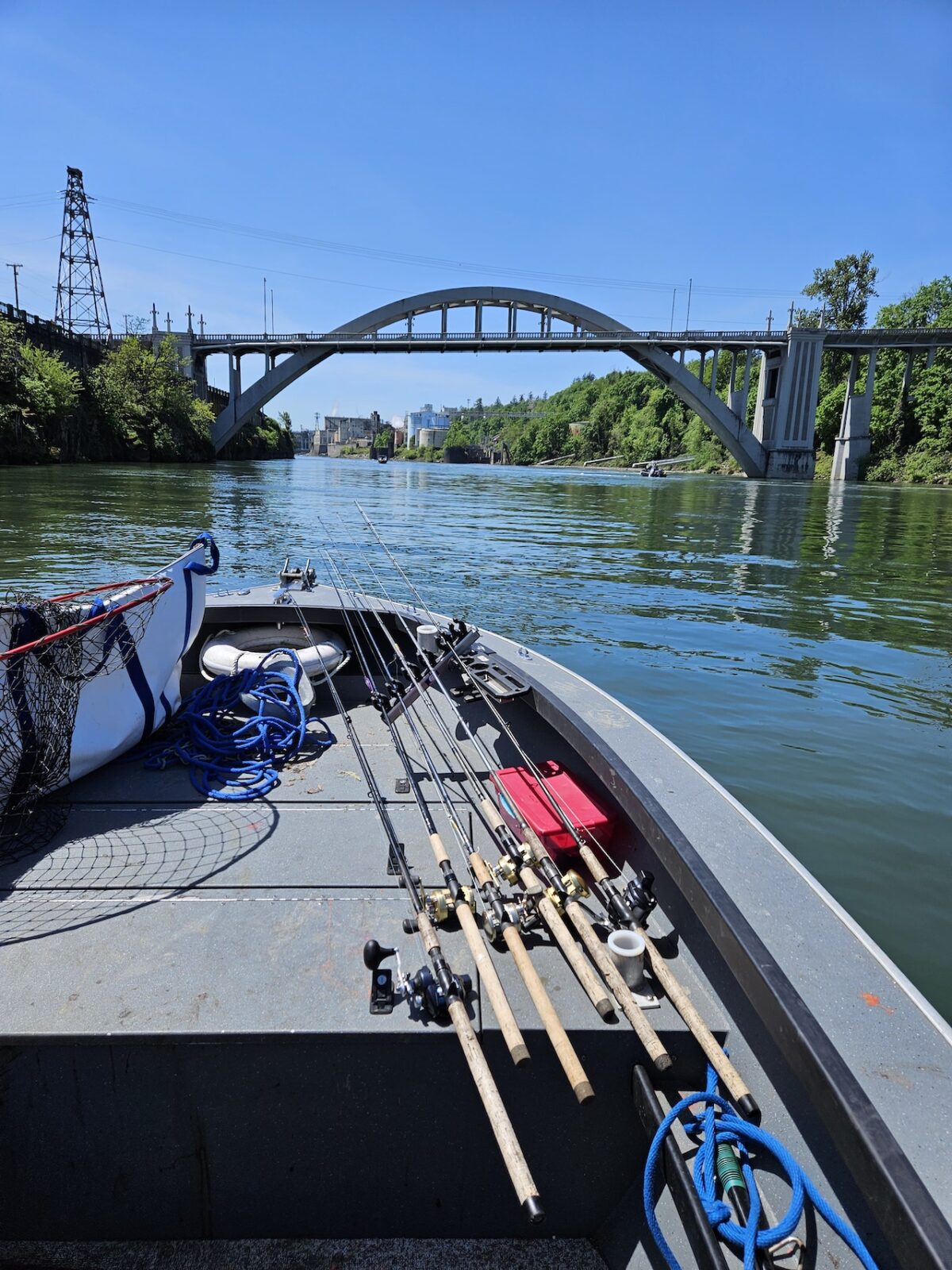
Willamette Summer Steelhead Production On Federal Chopping Block
Oregon sportfishing organizations are raising the alarm about “shocking” budget cuts to Willamette Valley salmon and steelhead hatchery programs by the Army Corps of Engineers, including a complete defunding of summer-run production.

Anglers are being urged to write to their Congressmen to protest the release of 172,000 fewer spring Chinook smolts, a two-thirds reduction in rainbow trout stocking – some 330,000 fish – and an end to steelhead releases.
The Northwest Sportfishing Industry Association said in its weekly newsletter that it’s not the first time it has fought off the Corps’ cuts, and it won’t be the last, “but you must act” and said that fishermen could make a difference by contacting Senator Jeff Merkley (D) and Representatives Lori Chavez-Deremer (R-Happy Valley) and Rep. Val Hoyle (D-Springfield).
In an action alert, NSIA Director Liz Hamilton claimed the Corps is “shirking” its responsibility to mitigate for its western Cascade dams that dropped salmon and steelhead returns in the basin to just 3 percent of how many fish once returned.
“In the face of already diminished returns, reductions of this magnitude would effectively bury sportfishing in the Willamette River Basin,” she stated, home to where 70 percent of the state’s population lives and recreates.
The Association of Northwest Steelheaders is also driving members to take action.
The summer steelhead program began in the late 1960s and provided a harvest of as many as 18,600 hatchery fish in the mainstem Willamette River and its tributaries as recently as 2012. Since then, runs have fallen on hard times, with a return of just 1,157 counted at Willamette Falls last year, a low mark back to the program’s beginnings.
Around 360,000 smolts were released into the North and South Forks of the Santiam and McKenzie Rivers in 2022, per ODFW’s latest posted propagation report.
For its part, the Corps’s Robert Wertheimer, acting Chief of Fisheries for the Portland District, acknowledges that federal funding for summer steelhead production is going away,
“Balancing conservation and angling opportunities requires difficult decisions; and our decision to eliminate summer steelhead was one of those. With our team of experts, we made what we believe to be the right decision: to fully fund the spring Chinook salmon yearling smolts in the McKenzie and Santiam subbasins and not the summer steelhead because of funding limitations and because summer steelhead are a non-native species,” Wertheimer said in a prepared statement.
He said that making budget decisions two years ahead of time means that sometimes spending projections don’t always match the actually available funding.
It’s believed that spring Chinook and winter steelhead were historically the only fish able to make it over Willamette Falls, but from the early 2000s into the mid-2010s, an average of almost 596,000 out-of-basin Skamania-strain summer smolts were released into upper Willamette tribs annually. Up to 34,000 hatchery summer-runs used the falls’ fish ladder to ascend into the upper basin as recently as the early 2000s. The average smolt-to-adult survival rate of 2.9 percent was relatively high and would have been to die for in other parts of the Northwest.
This is not the first time Willamette summer steelhead have been on the chopping block.
In 2018, NSIA learned that Leaburg Hatchery on the McKenzie stood to be mothballed, impacting production of 108,000 summer-runs and 459,000 rainbows, but at the 11th hour, state lawmakers came up with $1.3 million to continue operations. The legislature had to come to the rescue again in 2019 to save the North Santiam program after a lawsuit from wild fish groups left the Corps gun shy about funding it.
Earlier this year following an annual Corps-ODFW-McKenzie River Guides Association meeting, a report from the organization began floating around online stating that the state agency has eggs on hand in case the program can be resumed and that a final go-no go point is coming up in May.
As for those Willamette spring Chinook releases, the Corps’ Wertheimer said that this year’s available funding will provide for the release of just under 1.87 million yearlings into the Middle Fork Willamette, 604,750 into the McKenzie, 639,000 into the South Santiam, and 704,000 into the North Santiam.
“Across the Portland District’s area of responsibility, we rely on varied operational approaches and consider fish habitat, hatchery programs and harvest for an effective fish restoration strategy,” he said.
